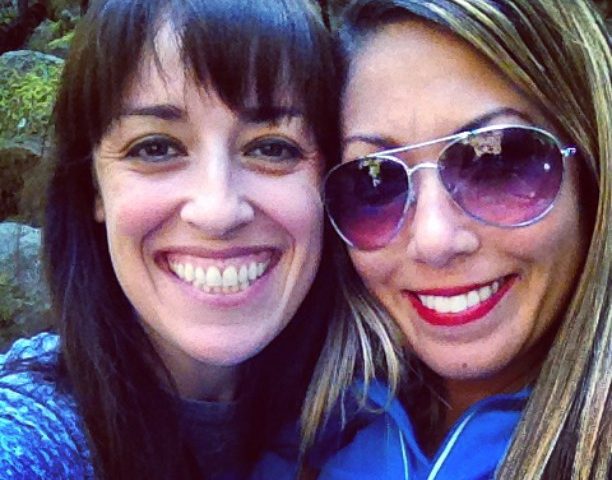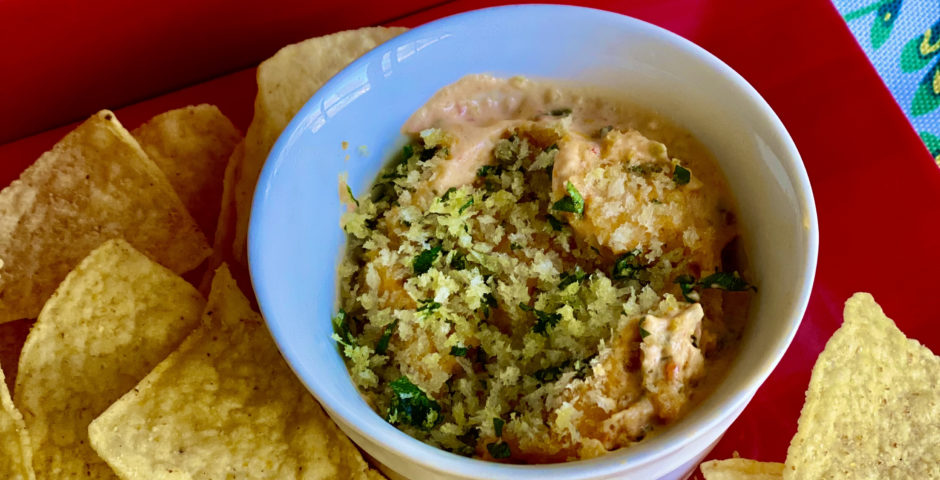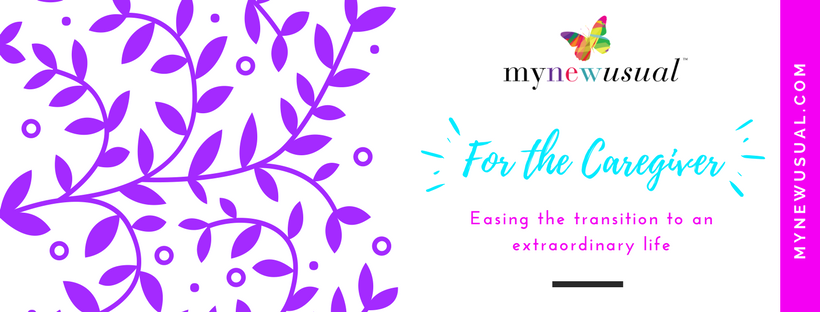
Pain: The Four-Letter-Word Disease

Guest Contributor Eloise shares her long journey through chronic pain and give us some direction on how to make it easier.
Some Thoughts on How to Make Your “New Usual” A Little More Bearable
Pain is a real disease. It has many causes, but no matter how you start feeling pain, you are stuck with the same unbearable wish to make it stop (maybe Pi style?).
I started dealing with chronic pain in May 2010 when I broke my back. For a long time, I haven’t wanted to talk about it, but since I recently found out a friend also broke her back, I’ve realized that things I’ve gone through may be useful to others. All of my musings below are what I’ve learned to be true for me. If you’ve learned otherwise in your dealings with pain, please let us know at info@mynewusual.com.
When the pain starts, don’t think that popping a few Advil will make it go away. Indeed, when I was first diagnosed as having a herniated disc (this turned out to be only a partial diagnosis), my general practitioner sent me to a physiatrist. She immediately set me up on a regimen that included medication, acupuncture and physical therapy. From the beginning, start learning your body; figure out how it hurts and don’t feel like you have to “cowboy up” – pain is real and pain begets pain – so dealing with it from the beginning will make it better.
![]()
Paper cuts hurt! Breaking your back hurts! Going for a test that involves prolonged discomfort hurts! If you are in pain and someone is brave enough to share his/her pain with you, don’t down that experience because it’s different. I’ve had a lot of friends who are nervous to share their pains with me because they fear theirs are trivial compared to mine. Pain and how we react is a part of the human/friend experience. Sharing is caring and sharing can make you feel better.
![]()
Find a pain doctor you like. Someone you can be completely honest with (about ALL your meds – including marijuana – in some states this may be part of your medical regimen, in other states, your doctor may be happy to turn a blind eye, and in the same state, she may say this isn’t for you.) This person is someone you’ll want to be able to ask dumb questions, ask for her cell phone number and expect her to answer at 10 pm some nights, and feel like she walks into the exam room knowing your case. Ask if the pain doctor has an affiliation with a private pharmacy, especially if it looks like you’ll be on narcotics for a while. Private pharmacies can receive faxes for your prescriptions, they have narcotics patient lists, work directly with your doctor, and they ship to your home. This way, you won’t have to hunt down a retail pharmacy with your prescription when you aren’t feeling well.
![]()
Figure out how to make treating the pain a part of your day. A friend I call “Coach Taylor” once gave me advice “Do one thing that advances your treatment every day.” Pain is often something that is out of your control, but if you can look back on your day, and know that you did something to help yourself, then you can feel a little bit better and in control.
![]()
Is there a particular move at physical therapy that makes you feel even 10% better while you’re doing it that you can do at home?
![]()
Is there an appointment that you can schedule?
![]()
Can your doctor write you an Occupational Therapy prescription? If you’re having trouble reaching or bending or doing things that you have to do every day, an OT can be immensely helpful.
Know that the pain itself is only part of the problem and that meds are only part of the solution.
![]()
SLEEP: Since I’ve been in pain, my sleep schedule is not what it used to be. I’ve come to terms with that. I have meditations that help, I have medications that help, and sometimes I recognize that I’m not getting to sleep. Netflix is a nice distraction (knowing that certain genres are better than others). There are days I get four hours sleep and that’s great for me. There are days I have to sleep for 18 hours and I still don’t feel rested. I recognize this and I talk about it with my doctors/therapist, but I don’t let it bother me the way it did originally.
![]()
NUTRITION: Since I broke my back, I am certainly not moving the way I used to. I am not burning the same number of calories; my medications give me heartburn and constipation. Pain itself sometimes makes me feel like food is difficult to deal with. I’ve tried to bone up on nutrition – I’ve asked my docs for help with all of the above and I’ve also recognized the days that ice cream is a legit analgesic.
![]()
MOOD: Even cowgirls get the blues. I consider myself a tough cookie, but researchers are still decoding how pain affects brain chemistry. Medications that were originally FDA approved for depression have now been approved for chronic pain (and medications that have been approved for pain may have mood disorders as the major side effect). Have an HONEST talk with your doctor about how you’re feeling. Maybe medications aren’t the route for you, but maybe meeting with a therapist regularly is. Maybe journaling will help you. If things like hearing from your brother used to make you happy and now you’re dodging his calls because you don’t want to burden him – that’s the blues. Be honest with yourself and then you can ask for help.
![]()
Doctors – find a circle of trust. By this point, I’ve already mentioned (and have myself) a general practitioner, pain doctor/psychiatrist/therapist, nutritionist, acupuncturist, physical therapist, occupational therapist – which equals seven doctors/treatment specialists and that doesn’t include surgeons, oncologists, or other specialists! Find people you trust. I’ve found the best way to go about this is to build off the person you trust first. For me that was my general practitioner – I asked her for a referral and built from there. This also means that if you are seeing someone who is part of a university system or teaching hospital, there is a good likelihood that your doctors will all be part of that system and know each other! If they know each other, getting them to contact each other about your case will become infinitely easier!!!
If you have to have surgeries, it means those doctors will all have privileges at that hospital – a huge perk if you’re in need of some general doctoring after a surgery. If your GP is part of a large enough practice (connected to a hospital), they may have a Hospitalist on staff. This doctor is at that hospital all day/every day for that practice’s patients and can write orders for sleep aids or antacids (big plus)! This doctor can also answer questions that you may develop during the day when surgeons are hard to access.
![]()
Doctors and treatments: you can find a price break/help with insurance. Maybe some of these treatments aren’t covered by insurance the first time you ask (especially acupuncture and therapy).
![]()
Ask your doctor to make a call to your insurance for pre-approval.
![]()
If insurance will not cover something, those teaching hospitals can become a real resource; since massage and acupuncture became a recognized part of pain therapy, cardiac surgeons, neurosurgeons, and other surgical practices, may have a lead or deal with massage and acupuncture college students who need a certain number of hours to complete their degree – thus they must give a discount because they aren’t fully licensed (but are under good supervision).
![]()
Therapy: same goes for psychiatry programs at major teaching hospitals. The big advantage here is the psychiatry resident is in his/her last part of training, but also has a consulting teacher, so not only do you get a price break, but you have 2 psychiatrists thinking about you.
![]()
If you aren’t near a major teaching hospital, many cities have access to social services and can offer counseling at medicaid/medicare rates
I hope these ideas are helpful. I’ve certainly learned some of them the hard way. The biggest thing I’ve learned over and over is that pain is real and it’s not imagined. Treat it as a real disease and you will get real results.







